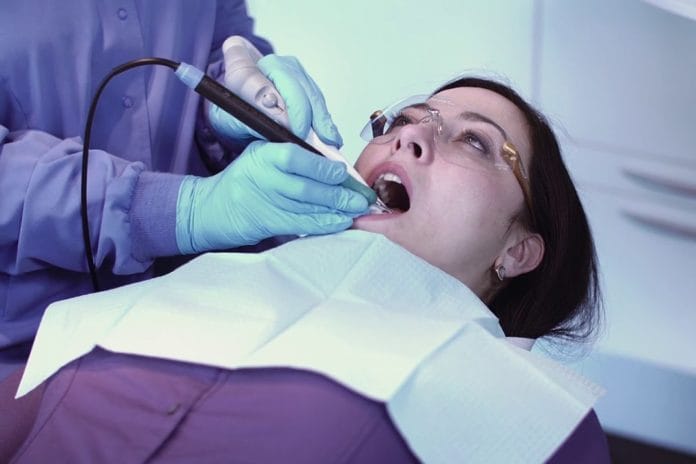Test Your Ultrasonic Insert Knowledge!
Disclosure: This quiz is sponsored content from Dentsply Sirona as part of our sponsored partner program.
Please note: As we are in the midst of a pandemic right now, state mandates, OSHA mandates, and CDC guidelines are changing all the time. Dental professionals should familiarize themselves with their state’s mandates, OSHA mandates, and the latest CDC Guidelines for aerosol-producing procedures.
CDC guidelines can be found here.
OSHA guidelines can be found here.
Now let's test your ultrasonic insert knowledge!
Slim ultrasonic inserts should be used at a high power setting. Slim ultrasonic inserts are effective at removing both biofilm and heavy calculus.
Slim ultrasonic inserts should be used in accordance with manufacturer instructions, at a low to medium power setting. If used at high power settings, root structure can be compromised, and clinical attachment loss can occur. Trying to remove heavy calculus at a high power setting may also cause damage to the insert itself which can result in ineffective oscillation. Slim ultrasonic inserts, when used at the correct power setting, are effective at removing biofilm and light to moderate calculus.1,2
1. Casarin, R., Bittencourt, S., Del Peloso Ribeiro, E., Humberto, Nociti, F., Sallum, A., & Casati, M. (2010, March). Influence of Immediate Attachment Loss during Instrumentation Employing Thin Ultrasonic Tips on Clinical Response to Nonsurgical Periodontal Therapy. Quintessence International, 41(3), 249-256. Retrieved from https://www.ncbi.nlm.nih.gov/pubmed/20213026.
2. Khambay BS, Walmsley AD, (1999, June). Acoustic Microstreaming: Detection and Measurement around Ultrasonic Scalers. J Clin Periodontology, 70(6), 626-631. Retrieved from https://www.ncbi.nlm.nih.gov/pubmed/10397518.
A 30 kHz ultrasonic insert completes 60,000 strokes per second.
“Tip oscillation frequency is a measure of the number of times, per second, the ultrasonic scaler probe (tip) completes one whole oscillation cycle. During this cycle, the probe (tip) traverses the tooth twice, producing a forward and backward stroke. Therefore, a probe (tip) with a frequency of 30 kHz, performs 60,000 cleaning strokes per second1,” generally speaking.
1. Lea, S.C., Walmsley, A.D. (2011). Do Ultrasonic Scaler Inserts and Generators From the Same Manufacturer Optimize Performance? Annual Clinical Journal of Dental Health, 1, 22-27. Retrieved from https://cdn.vivarep.com/contrib/va/documents/al_lib_24.201272595235770.pdf.
A triple bend ultrasonic insert is efficient at removing moderate to heavy calculus. The bends allow this insert to adapt well in periodontal pockets >4mm.
The beveled edge of a triple bend ultrasonic insert is efficient at removing moderate to heavy calculus. However, because of the bends, this insert does not adapt well in pockets >4mm and will cause significant damage to root and tooth structure if the point of the tip comes into direct contact at 90°. A triple bend ultrasonic insert is indicated for patients with moderate to heavy calculus, but not deep periodontal pockets.1
1. Retrieved from https://www.dentsplysirona.com/content/dam/dentsply/microsites/cavitron_CA/GettingtheMostoutofUltrasonicScaling.pdf.
As an ultrasonic insert tip wears, a single millimeter of wear reduces efficacy by ____. A loss of 2 mm reduces efficacy by ____.
As an ultrasonic insert tip wears from use over time, this loss of tip length translates into a loss of efficacy. Research shows a single millimeter of wear reduces efficacy by 25%.1 A loss of 2mm reduces efficacy by 50%.1 Worn tips can cause the use of excessive pressure while scaling, which results in discomfort for both the clinician and patient.
A clinician should monitor the wear of ultrasonic insert tips often and use the wear guide supplied by the manufacturer to help monitor the need for replacement. The stack of an ultrasonic insert should be monitored as well. Spread, bent, or broken laminates in the stack can lead to loss of power and can damage the handpiece.
1. Lea, S.C., Landini, G., Walmsley, A.D. (2006). The Effect of Wear on Ultrasonic Scaler Tip Displacement Amplitude. J Clin Periodontol, 33, 37-41.
Ultrasonic inserts from a different manufacturer than the ultrasonic unit are compatible and will not affect treatment outcomes or cause damage to the ultrasonic unit.
Though inserts from a different manufacturer than the ultrasonic unit appear the same, there is high variability and significant differences which can damage an ultrasonic unit and affect treatment outcomes.1,2 Research shows using inserts from a differing manufacturer than the unit increases the displacement amplitude with an increase in power setting.1 Displacement amplitudes of inserts from different manufacturers are found to be significantly different from each other at all loads.1 In addition, insert movement varies between different manufacturers.2 This variability is most often the cause of damage to an ultrasonic unit. Using inserts from the same manufacturer as the ultrasonic unit guarantees effective treatment outcomes without compromising or damaging the ultrasonic unit.
1. Lea, S.C., Landini, G., Walmsley, A.D. Ultrasonic Scaler Tip Performance under Various Load Conditions. J Clin Periodontol. Oct. 2003; 30(10):876-881.
2. Lea, S.C., Landini, G., Walmsley, A.D. Displacement Amplitude of Ultrasonic Scaler Inserts. J Clin Periodontol. Jun. 2003; 30(6):505-510.














